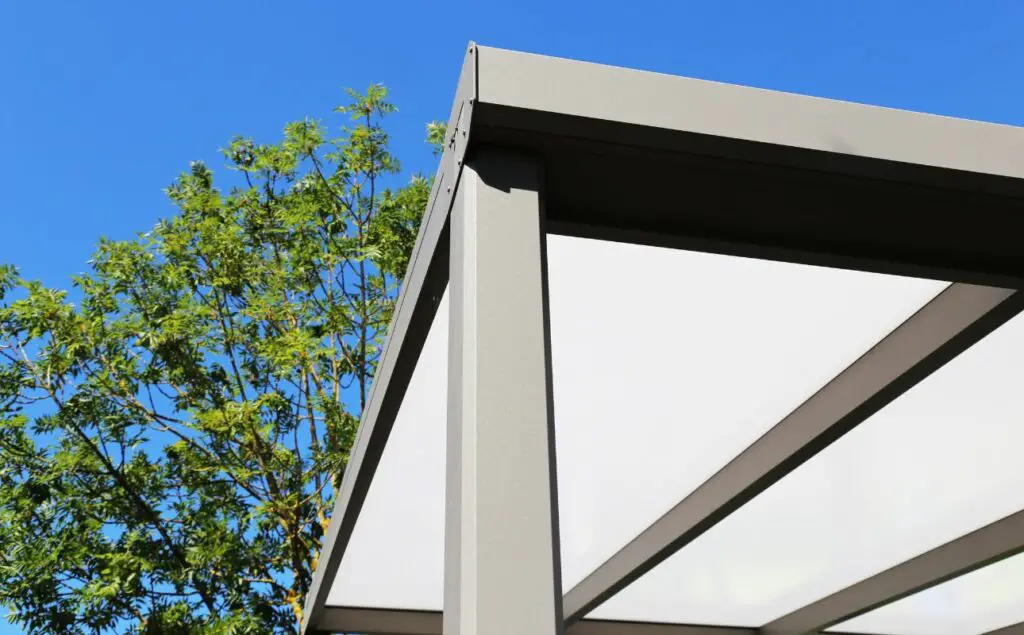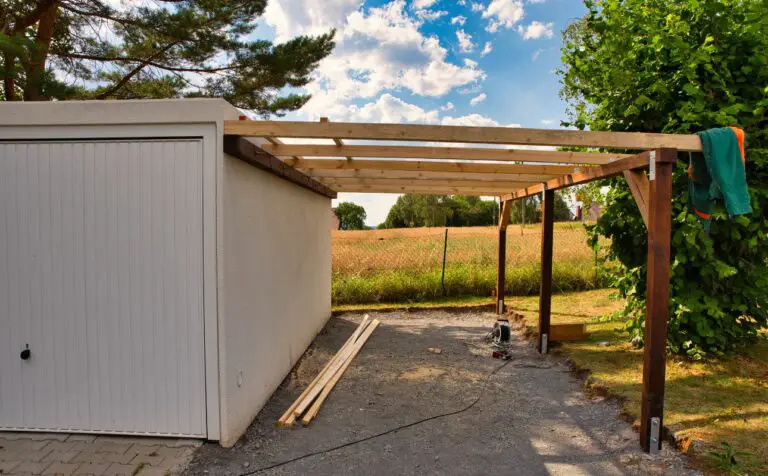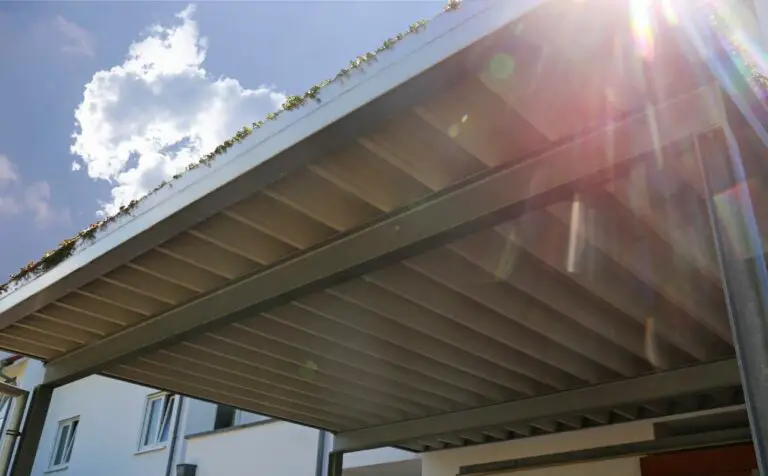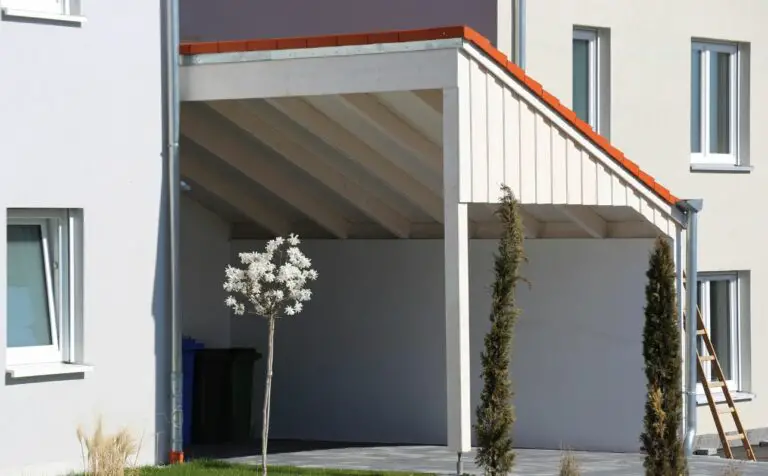Carports are an important part of any property because they protect cars and other tools from the weather. Strong winds, however, have the potential to damage them and cost their owners a lot of money.
Because bad weather can damage carports, homeowners who want to keep their investments from being damaged are more worried than ever. This article tells you how to keep your carport from blowing away in a thorough way.
To make sure your carport stays together even in bad weather, you need to look at your surroundings and choose the right anchoring method. There are many ways to keep a carport safe, but not all of them may work in every place or situation.

Assess Your Environment
It is essential to consider wind patterns, as high winds can cause significant damage to carports. Evaluating soil conditions is also crucial since the foundation’s strength will determine the carport’s stability.
If the soil is weak or prone to erosion, it may be necessary to reinforce the foundation by adding concrete or using steel anchors that penetrate deeper into the ground for added support.
By assessing your environment thoroughly, you can determine which anchoring system will work best for your carport and help prevent it from blowing away during extreme weather conditions.
Choose the Right Anchoring System
Concrete anchors are a popular option for carport anchoring due to their durability and strength. They require drilling into the ground and setting the anchor with concrete, providing a solid connection between the carport frame and the ground.
Auger anchors, on the other hand, twist into the soil like corkscrews and can be easily removed or adjusted if necessary.
Concrete Anchors
Utilizing concrete anchors for securing a carport is a practical and effective solution to ensure stability and safety during strong winds or extreme weather conditions. Concrete anchor alternatives are available in different sizes and shapes, making it possible to choose the right option according to the type of carport, soil quality, and other factors.
DIY carport anchoring with concrete anchors requires some preparation before pouring the mixture into the holes drilled in the ground. The first step involves preparing a stable base by digging holes that are wider at the bottom than at the top. Once this is done, insert rebar rods into each hole before pouring the concrete mix on top of them.
Auger Anchors
Auger anchors are an alternative solution for securing a carport in areas with loose soil or high wind conditions by providing additional support and stability. The installation process involves drilling the anchor into the ground using a handheld drill or power tool.
The anchor materials consist of steel that is galvanized to resist rust and corrosion, making it durable and reliable for long-term use. Auger anchors come in various sizes and lengths to accommodate different types of carports and soil conditions.
They work by creating a deep hole in the ground, which helps distribute the weight of the structure evenly across a larger area, reducing the risk of it tipping over or blowing away during heavy winds.
Mobile Home Anchors
Mobile home anchors are an effective solution for reinforcing the stability of a carport in areas prone to high winds or loose soil conditions. These anchors provide added protection against strong gusts of wind, which can easily lift and damage a carport.
Anchor installation is relatively simple and involves driving the anchor into the ground using a hand-held tool. Once installed, regular anchor maintenance is required to ensure continued effectiveness. This includes checking for any signs of damage, rust, or corrosion on the anchor and replacing it if necessary.
Mobile home anchors are one aspect of keeping your carport secure against extreme weather conditions, which can cause significant damage if not properly prepared for.
Secure Your Carport
The securitization of a carport is essential to ensure its durability and stability, especially in areas prone to high winds or severe weather conditions.
When it comes to securing your carport, there are various DIY solutions that you can opt for, such as installing concrete anchors or using sandbags as weights. However, if you want a more reliable solution that guarantees maximum safety and protection for your carport, professional installation is the way to go.
Professional installers have the expertise and equipment necessary to anchor your carport securely into the ground using specialized tools like augers or helical piles. By doing so, they ensure that your carport remains stable even during strong wind gusts or other hazardous weather events.
Maintain Your Carport
Maintaining your carport is crucial to ensuring its longevity and preventing it from blowing away. DIY carport maintenance is not only cost-effective but also allows you to inspect the structure for any potential damages or weaknesses.
Best carport maintenance practices include regularly cleaning and removing debris, checking for rust or corrosion, tightening loose bolts and screws, and replacing worn-out parts.
Additionally, keeping the roof clear of heavy snow or ice buildup during winter months can prevent structural damage caused by excess weight. By conducting routine maintenance checks, you can identify issues early on before they become larger problems that may require costly repairs or replacements.
Take Precautionary Measures
To take precautionary measures and prevent your carport from blowing away during strong winds, it is recommended to lower its profile. This can be achieved by removing any unnecessary extensions or additions to the structure that could increase wind resistance.
Lower Your Carport’s Profile
Reducing the height of your carport and minimizing any protruding features can make it less susceptible to wind damage by decreasing its surface area and overall wind resistance. This can be achieved through careful design considerations when building or installing a carport.
For instance, alternative materials that are more resilient to strong winds could be used instead of traditional materials like wood or aluminum.
Additionally, professional installation with proper anchoring techniques can ensure that the structure is firmly secured to the ground. By lowering the profile of your carport and using sturdy materials, you can significantly reduce the risk of it blowing away during severe weather conditions.
Remove Loose Objects Around Your Carport During Strong Winds
During strong winds, it is advisable to remove any loose items in the vicinity of your carport as they may pose a significant safety hazard by becoming airborne and causing damage to nearby structures or individuals.
Although this may be inconvenient, taking such precautions can greatly reduce the risk of injury or property damage.
Clearing debris around your carport will prevent objects from being picked up by strong gusts of wind, reducing the risk of them colliding with other objects or people.
Additionally, reinforcing structures is important for maintaining stability during high winds. Making sure that your carport’s foundation is secure and that any bolts are tight can help prevent it from being lifted off its base and damaging surrounding areas.
What should I do if I have a carport with no anchoring system currently in place?
If you have a carport without an anchoring system in place, it is important to take steps to secure it properly. Here are some suggestions on what you can do:
- Determine the type of carport: Understand the design and construction of your carport. Different types may require different anchoring methods.
- Local regulations: Check your local building codes and regulations to ensure compliance. Some areas have specific requirements for anchoring structures like carports.
- Assess the ground conditions: Evaluate the ground where the carport is located. Factors such as soil type, slope, and drainage can influence the choice of anchoring method.
- Select an anchoring system: There are several anchoring options available, depending on your carport’s design and ground conditions. Here are a few common options:
- Concrete footings: Dig holes and pour concrete footings at each corner of the carport. Attach the carport frame to the footings using anchor bolts or brackets embedded in the concrete.
- Auger anchors: Screw auger-style anchors into the ground at each corner of the carport. These anchors go deep into the soil to provide stability. Attach the carport frame to the anchors using appropriate hardware.
- Mobile home anchors: Mobile home anchors, also known as earth anchors or mobile home tie-downs, are large, screw-like anchors that can be driven into the ground. Install these anchors around the perimeter of the carport and secure them to the frame.
- Ballast weights: If your carport is not permanently fixed to the ground, you can use ballast weights to provide stability. These weights can be concrete blocks, sandbags, or specially designed weights made for carports.
How Often Should I Check The Anchoring System On My Carport?
It is important to regularly inspect and check the anchoring system of your carport to ensure its stability and effectiveness. The frequency of these checks can depend on various factors, such as:
- Weather conditions: If you live in an area prone to strong winds, heavy rains, or severe weather events, you may need to inspect your carport’s anchoring system more frequently. Adverse weather can potentially impact the stability of the structure.
- Seasonal changes: Temperature variations, ground shifting, and freezing/thawing cycles can affect the integrity of the ground and the anchoring system. Consider checking the anchoring system at the beginning of each season to ensure it remains secure.
- Visual inspection: Regularly visually inspect the carport and its anchoring system for any signs of damage or movement. Look for loose or corroded components, bent or damaged anchors, or any structural issues that may compromise the stability.
- Occurrence of events: If any significant events occur near the carport, such as nearby construction, ground excavation, or vehicle collisions, it is advisable to check the anchoring system afterward to ensure it has not been affected.
The Bottom Line
Preventing your carport from blowing away requires careful assessment of the environment, choosing the right anchoring system, securing the structure properly, and taking precautionary measures. Neglecting any of these steps can lead to disastrous consequences and pose a hazard to both people and property.
It is imperative that you maintain your carport regularly by checking for any signs of wear and tear, replacing damaged parts promptly, and keeping it clean. Protecting your carport from strong winds is similar to safeguarding yourself in a stormy weather conditions where you need a sturdy shelter to protect you from harsh elements that can harm you.





